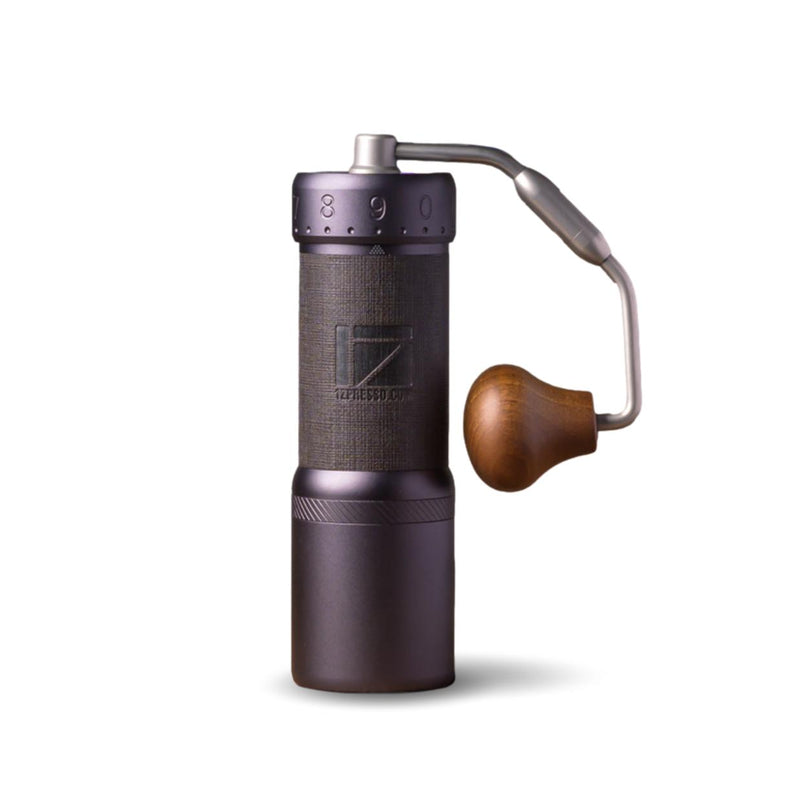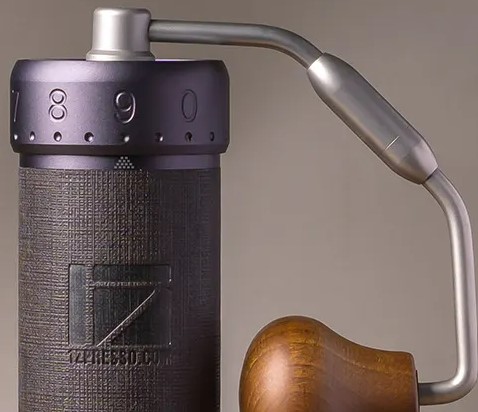Grind with Confidence: Experience the 1Zpresso J-Max Coffee Mill
Grind with Confidence: Experience the 1Zpresso J-Max Coffee Mill
Blog Article
Master the Art of Grinding Coffee Beans: A Guide to Coffee Grinders
For coffee enthusiasts, the process of grinding coffee beans is more than just a regular task; it is an art kind that can considerably affect the taste and top quality of the last brew. Understanding the nuances of different grinder kinds, choosing the proper grind dimension, and using the right techniques are essential actions in the direction of achieving that perfect mug of coffee.
Kinds Of Coffee Grinders
There are 3 primary sorts of coffee mills frequently utilized by coffee enthusiasts: blade mills, burr mills, and hands-on grinders. Blade mills are the a lot of fundamental type, utilizing an easy blade to cut the coffee beans. While they are affordable and simple to utilize, they often lead to irregular coffee grounds because of irregular grinding. Burr grinders, on the other hand, supply more accuracy by crushing the beans in between a relocating grinding wheel and a non-moving surface area. This causes an uniform work size, which is crucial for a consistent coffee flavor. Burr mills can be found in both flat and conelike shapes, each offering a little different grinding characteristics.
Hands-on mills, as the name suggests, need manual effort to grind the coffee beans. Each kind of coffee mill has its benefits and optimal use cases, providing to the diverse preferences of coffee enthusiasts.

Selecting the Right Work Dimension
With an understanding of the various sorts of coffee mills, the following critical action in accomplishing the ideal mug of coffee is picking the best grind size. The grind dimension plays a significant function in figuring out the taste profile of your coffee (1Zpresso J-Ultra). Various developing techniques call for certain grind dimensions to enhance the removal of tastes from the coffee premises
For a rugged work, ideal for French press and chilly mixture techniques, the coffee beans must appear like breadcrumbs, supplying a robust and bold flavor. Medium-coarse grinds, appropriate for Chemex or Clever Dripper, have a texture similar to crude sand, providing a balanced preference.
Tool grinds, typically used in drip coffee makers, have a consistency appearing like regular sand, resulting in a well-rounded flavor. Fine grinds, ideal for espresso machines, belong to table salt, generating an abundant and extreme taste. Ultimately, extra-fine grinds, used in Turkish coffee, are as fine as powdered sugar and produce a solid and powerful brew.
Grinding Techniques for Optimum Flavor
To remove the max potential of flavor from your coffee beans, mastering correct grinding techniques is vital. Uniformity is key when it comes to grinding coffee beans for optimum flavor. By paying attention to these grinding techniques, you can elevate the flavor account of your coffee and take pleasure in a more enjoyable cup every time.
Upkeep and Cleaning Up Tips

Along with regular cleansing, it is crucial to check your mill for any kind of indicators of wear or damages. Check the blades, burrs, and other parts for any monotony or malfunctions. Change any damaged components promptly to keep the quality of your coffee grind. Finally, shop your grinder in a completely dry and tidy environment to stop any wetness or dust from impacting its performance. By adhering to these maintenance and cleansing suggestions, you can make sure that your coffee grinder proceeds to provide tasty fresh ground coffee for years ahead.
Troubleshooting Common Grinder Issues


Guaranteeing your coffee mill functions smoothly requires skilled troubleshooting of typical issues that may emerge throughout its use. One common problem with coffee mills is inconsistent grind dimension. This problem can occur due to boring blades, inappropriate calibration, or uneven coffee beans. To address this, guarantee your grinder's blades are sharp and properly straightened, calibrate the grinder according to the wanted work size, and shake the grinder delicately why not find out more while in operation to help accomplish an extra consistent grind.
Another regular concern is grinder clogging. This can take place when oils from the coffee beans develop and block the mill's chute. To fix this, disassemble the grinder and clean all parts completely, paying special attention to the chute and burrs. In addition, be conscious of overfilling the hopper to avoid blockages.
Lastly, if your mill is producing extreme sound throughout operation, it could indicate a trouble with the electric motor or internal components. In such cases, it is advisable to seek advice from the producer's instructions for troubleshooting actions or seek expert assistance to detect and remedy the issue website here without delay.
Verdict
In conclusion, grasping the art of grinding coffee beans includes comprehending the various kinds of coffee mills, picking the best grind size, making use of proper grinding strategies for optimal taste, and preserving and cleansing the grinder consistently. By adhering to these standards and troubleshooting common grinder problems, coffee enthusiasts can boost their coffee brewing experience and appreciate a delicious cup of coffee every time.
Report this page